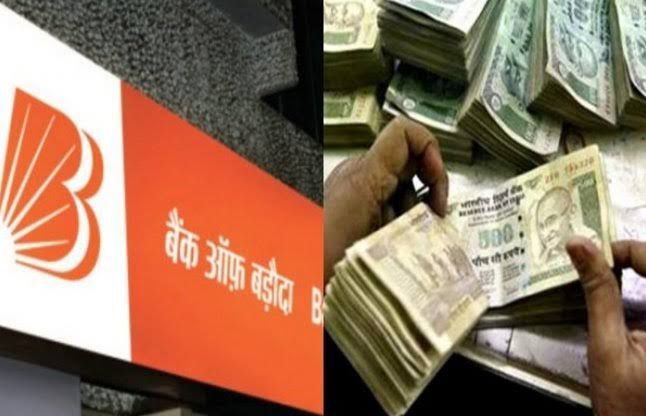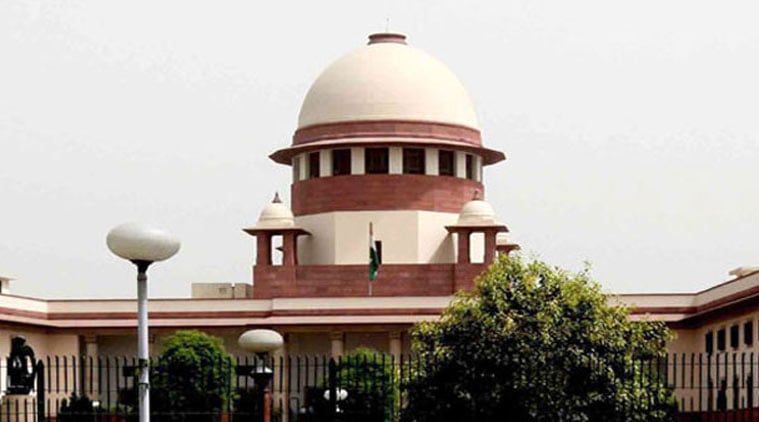Author- Sonali Yadav from Asian Law College
To the Point
This one of the landmark scams is a textbook case of money laundering, round-tripping, and regulatory evasion facilitated through official banking channels. The scandal involved the illegal remittance of approximately ₹6,000 crore which is ($951 million at the time) to foreign entities, disguised as advance payments for imports. This huge misuse of the banking system raised grave concerns regarding the regulatory oversight, compliance failures, and loopholes in India’s banking system. The case highlighted how shell companies and certain bank officials conspired to bypass regulatory norms and facilitate fraudulent transactions under the name of legitimate trade. The money, mostly untraceable which is not possible to recover. The scandal shook public confidence in the Indian banking system and initiated multiple high-profile investigations by agencies such as the Enforcement Directorate (ED) and the Central Bureau of Investigation (CBI).
Abstract
The Bank of Baroda Forex Scam of 2015 was a well-orchestrated money laundering operation disguised as advance payments for imports. A series of dubious transactions over 8,000 transactions were conducted between May 2014 and August 2015 from a single branch of Bank of Baroda in Ashok Vihar, New Delhi. Fake or dummy companies were used to funnel money to accounts in Hong Kong, ostensibly for imports, although no goods were actually imported. The incident raised questions about internal auditing, the integrity of public sector banks, and the effectiveness of regulatory compliances. This scam brought to light significant issues such as weak internal audit mechanisms in public sector banks, inadequate due diligence and Know Your Customer (KYC) checks and exploitation of the compensation scheme under Foreign Exchange Management Act (FEMA), 1999. The resulting crackdown by the CBI and ED not only led to legal actions against several individuals but also drove significant reforms in bank auditing practices, cross-border transaction monitoring, and KYC enforcement. The scam brought several arrests, including bank officials and businesspersons, and triggered long-term reforms in banking compliance and foreign exchange regulation.
Use of Legal Jargon
In order to understand this scam, it is essential to understand the several legal and financial terms:
FEMA (Foreign Exchange Management Act), 1999: This act aims to regulate foreign exchange in India which promotes international trade and payments while managing the foreign exchange market. Under the FEMA:
Section 3: this section prohibits the unauthorised dealings in foreign exchange, payments to non-residents, and acquisition of foreign assets without approval.
Section 4: this section restricts residents from holding or transferring foreign exchange, securities, or immovable property outside India without permission.
KYC Norms (Know Your Customer): This process used by financial institutions and other regulated businesses to verify the identity of their customers and assess potential risks associated with them. Its primary purpose is to prevent illegal activities like money laundering, terrorism financing, and fraud, while also ensuring the integrity of financial transactions.
Shell Companies: A shell company is a business entity that exists only on paper and has no physical operations, employees, or significant assets. These companies are often set up to:
Hold assets
Facilitate financial transactions
Avoid taxes
Hide ownership or identity
In this scam, over 59 such companies were implicated.
Trade-Based Money Laundering (TBML): It is one of the most complex and least detected forms of money laundering, where legitimate trade channels are exploited to transfer illicit funds.
Letter of Credit (LC): It is a written guarantee issued by a bank on behalf of a buyer (importer), promising to pay the seller (exporter) a specified amount upon presentation of certain documents proving shipment or delivery of goods/services.
It is mainly used in international trade to reduce payment risk for both parties.
SWIFT (Society for Worldwide Interbank Financial Telecommunications): It is a global messaging network used by banks and financial institutions to securely send and receive information about financial transactions, such as money transfers, securities trades, and foreign exchange payments. It does not hold or transfer funds, but ensures the secure exchange of financial messages between institutions.
The Prevention of Money Laundering Act,2002: It is India’s primary law to combat money laundering, confiscate proceeds of crime, and ensure that the financial system is not misused for laundering illicit funds. It came into force on 1st July 2005, and is enforced by the Enforcement Directorate (ED) under the Department of Revenue, Ministry of Finance.
Benami Transactions: Transactions made under a fictitious name or by someone other than the real beneficiary. Many of the shell companies involved were later found to be benami entities.
The Proof
1. CBI & ED Investigation: The Enforcement Directorate (ED) found evidence of over ₹6,000 crore sent to Hong Kong-based accounts using shell firms, with no actual goods imported. Transactions involved 59 shell companies. More than 8,000 transactions executed in less than 15 months.
2. Modus Operandi: Shell companies were opened with forged documents and dubious addresses. Advance payments for imports were made below $100,000 to avoid RBI scrutiny. These payments were routed via SWIFT messages without proper documentation. Goods were never received at Indian ports indicating fraud.
3. Arrests & Chargesheets: At least 20 people, including directors of shell firms and bank staff, were arrested.
Some Landmark Case Laws of Money Laundering:
Directorate of Enforcement v. State of West Bengal (2019)
Case Summary- The Supreme Court addressed a jurisdictional conflict where the West Bengal government resisted the Enforcement Directorate’s (ED) investigation into the Saradha chit fund scam under the Prevention of Money Laundering Act (PMLA), 2002. The state argued that its police were already investigating related offences. The Court upheld the ED’s authority, ruling that central agencies can independently investigate and prosecute money laundering, irrespective of ongoing state investigations. It emphasized that PMLA is a special law and affirmed the ED’s power without requiring state consent, reinforcing India’s federal and constitutional structure.
State v. Shree Shyam Industries (2018)
Case Summary- The Enforcement Directorate (ED) proceeded under the Prevention of Money Laundering Act based on ECIR/01/AZO/2012, related to FIRs from 2010. The appellant, arrested in July 2016, moved under Section 227 Criminal Procedure Code (CrPC), 1973 seeking discharge, arguing that the PMLA could not apply retroactively and that the transactions were legitimate personal dealings. The Special Judge (PMLA), Ahmedabad, denied discharge in January 2018, finding prima facie evidence of hawala transactions and possession of proceeds of crime linked to scheduled predicate offences under IPC and the Prevention of Corruption Act.
RBI vs. Jayantilal N. Mistry (2015)
Case Summary- The Supreme Court ruled that RBI must disclose information about banks under the RTI Act, rejecting RBI’s claim of a fiduciary relationship exempting it from transparency. The Court emphasized that RBI’s duty is to serve public interest and not individual banks, and found that disclosing inspection reports, default lists, and related data would not harm economic interests. Subsequent attempts by banks to recall the decision were dismissed in 2021. In 2022, the Court expressed doubts, noting the earlier judgment didn’t balance RTI rights with privacy rights.
Conclusion
This Bank of Baroda scam with over ₹6,000 crore fraudulently remitted to Hong Kong through fictitious import transactions, the scam demonstrated how even a leading public sector bank could be misused for money laundering via trade-based transactions. Shell companies, fake documentation, and repeated small remittances were strategically used to avoid regulatory scrutiny and bypass RBI’s foreign exchange rules under FEMA. The scam brought to light glaring non-compliance with KYC norms, lack of due diligence, and internal audit failures. Importantly, it raised questions about the efficiency of supervisory frameworks, as RBI and FIU-IND remained unaware for months until a whistleblower alerted authorities. This case illustrated the misuse of legitimate financial channels for illegitimate ends, pointing to a deeper malaise of corruption, collusion, and regulatory apathy. In essence, the Bank of Baroda scam was not merely a financial crime it was a crisis of governance, ethics, and institutional responsibility, demanding systemic change and uncompromising vigilance in India’s financial architecture.
FAQs
Q1: What is the Bank of Baroda Forex Scam?
Ans: It was a ₹6,000 crore scam in which fake import bills were used to remit money to foreign entities from Bank of Baroda (BoB) Ashok Vihar branch between 2014–2015.
Q2: How did the scam happen?
Ans: Shell companies used fake documents to remit foreign exchange under the guise of import payments. Bank officials processed over 8,000 remittances without verifying the genuineness of the imports.
Q5: Were any arrests made?
Ans: Yes. Over 20 people, including Bank of Baroda (BoB) officials and business owners, were arrested.
Q6: What were the loopholes used in the scam?
Ans: There are some loopholes in this scam are as below:
Poor KYC checks
Failure to verify actual imports
Splitting payments below $100,000 to avoid RBI red flags
Use of shell companies and fake documents
Q7: What reforms were introduced after the scam?
Ans: Some major reforms have been introduced after this scam are as below:
RBI issued stricter norms for foreign remittances
Enhanced audit of forex branches
Introduction of red flag indicators for suspicious transactions
Q8: What’s the current status of the case?
Ans: As of 2025, the case is still under trial in Special CBI and PMLA courts, with multiple supplementary chargesheets filed.
Q9: How can such scams be prevented?
Ans: Some methods are given in order to prevent these types of scams:
Mandatory digital verification of invoices
Use of blockchain in trade finance
Strengthened interbank audit trails
Real-time SWIFT integration with RBI’s surveillance
Q10: Was this an isolated scam?
Ans: No. It was part of a broader pattern of trade-based money laundering in India. Other banks like PNB and IDBI have also reported similar scams, although of smaller value.
References
https://www.business-standard.com/article/companies/rs-6-000-cr-bank-of-baroda-scam-cbi-files-2-supplementary-chargesheets-121122500556_1.html
https://plutuseducation.com/blog/bank-of-baroda-scam/
https://www.livemint.com/politics/czech-leader-calls-on-trump-to-give-europe-more-time-to-rearm-11749708842045.html
https://www.financialexpress.com/business/banking-finance-bank-of-baroda-forex-scam-all-you-need-to-know-in-10-points-152781/



